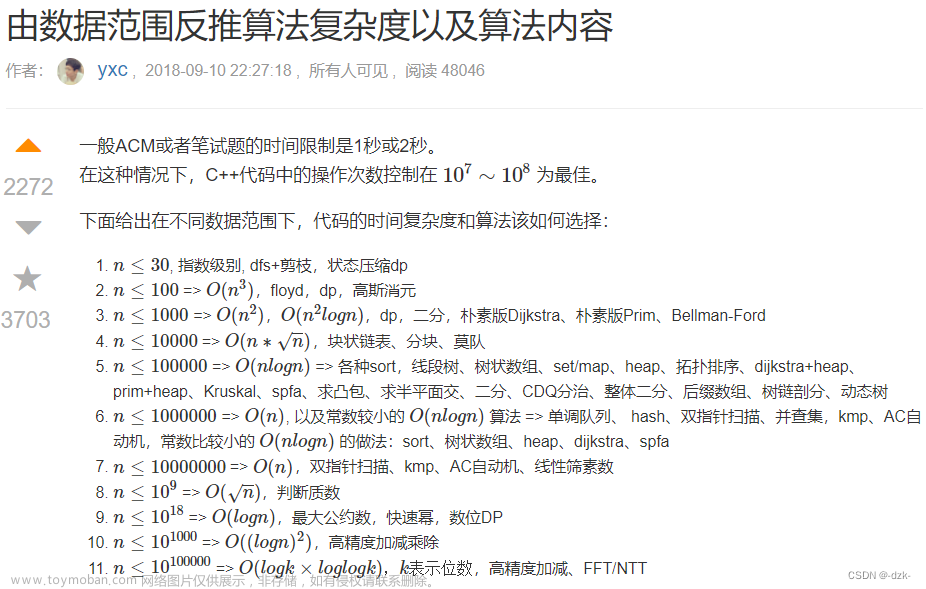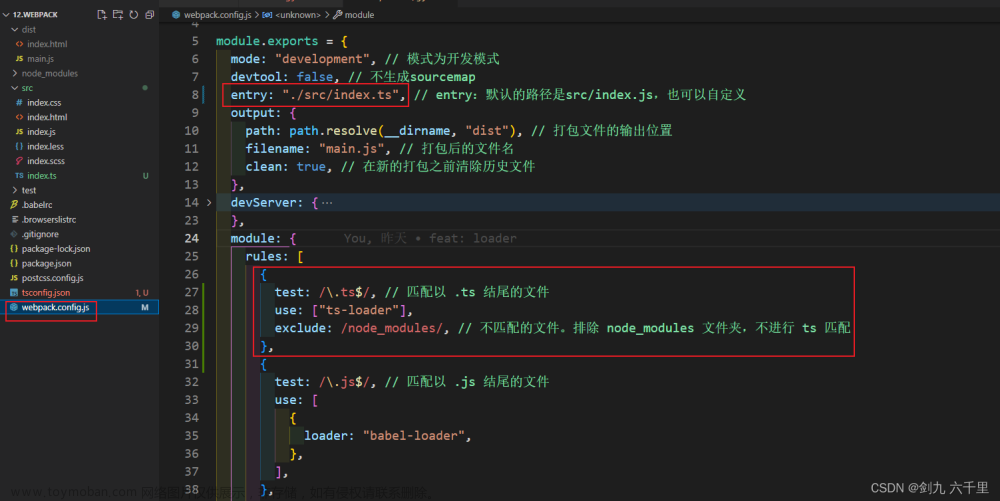第三章 OpenGL ES 基础-GLSL渲染纹理
第一章 OpenGL ES 基础-屏幕、纹理、顶点坐标
第二章 OpenGL ES 基础-GLSL语法简单总结
第三章 OpenGL ES 基础-GLSL渲染纹理
第四章 OpenGL ES 基础-位移、缩放、旋转原理
第五章 OpenGL ES 基础-透视投影矩阵与正交投影矩阵
第六章 OpenGL ES 基础-FBO、VBO理解与运用
第七章 OpenGL ES 基础-输入输出框架思维
GLSL的shader介绍
vec4 :是四个分量的向量
mat4 :是4x4的浮点矩阵
渲染一张图片纹理写简单的shader
着色器分为两类:顶点着色器和片元着色器。
-
顶点着色器:
- 顶点着色器是一种处理输入顶点数据的着色器。它主要用于对每个顶点进行变换、投影和其他操作,以便将顶点从模型空间转换到裁剪空间。
- 顶点着色器执行的操作包括顶点位置变换、法线变换、颜色插值等。这些操作影响顶点的最终呈现方式。
-
片元着色器:
- 片元着色器(也称为像素着色器)负责计算片元(像素)的颜色值。它通常在顶点着色器处理后的几何形状上运行,用于确定像素的最终颜色。
- 片元着色器可以执行纹理采样、光照计算、阴影处理等操作,以确定每个像素最终的颜色输出。
//顶点坐标(原点为显示区域中心店)
private final float[] vertexData = {
-1.0f, -1.0f, //左下角
1.0f, -1.0f, //右下角
-1.0f, 1.0f, //左上角
1.0f, 1.0f, //右上角
};
//纹理坐标(原点为显示区域左下角)
private final float[] textureData = {
0.0f, 0.0f, //左下角
1.0f, 0.0f, //右下角
0.0f, 1.0f, //左上角
1.0f, 1.0f, //右上角
};
String vertexSource =
"attribute vec4 av_Position; // 顶点位置属性\n" +
"attribute vec4 af_Position; // 纹理坐标属性 (S, T)\n" +
"varying vec2 v_texPosition; // 传递给片段着色器的纹理坐标\n" +
"uniform mat4 u_Matrix; // 投影矩阵\n" +
"void main() {\n" +
" // 调整纹理坐标,将 y 坐标翻转(上下颠倒)\n" +
" v_texPosition = vec2(af_Position.x, 1.0 - af_Position.y);\n" +
//" v_texPosition = af_Position.xy;\n" + // 另一种纹理坐标赋值方式
" gl_Position = u_Matrix * av_Position; // 计算最终顶点位置\n" +
"}\n";
String fragmentSource =
"precision mediump float; // 浮点数精度\n" +
"varying vec2 v_texPosition; // 接收来自顶点着色器的纹理坐标\n" +
"uniform sampler2D sTexture; // 纹理采样器\n" +
"\n" +
"void main() {\n" +
" // 从纹理中获取像素颜色,并输出到屏幕\n" +
" gl_FragColor = texture2D(sTexture, v_texPosition);\n" +
"}";
OpenGL线程加载顶点着色器和片元着色器
public static int loadShader(int shaderType, String source)
{
int shader = GLES20.glCreateShader(shaderType);
if(shader != 0)
{
GLES20.glShaderSource(shader, source);
GLES20.glCompileShader(shader);
int[] compile = new int[1];
GLES20.glGetShaderiv(shader, GLES20.GL_COMPILE_STATUS, compile, 0);
if(compile[0] != GLES20.GL_TRUE)
{
Log.d("ywl5320", "shader compile error");
GLES20.glDeleteShader(shader);
shader = 0;
}
}
return shader;
}
public static int createProgram(String vertexSource, String fragmentSource)
{
int vertexShader = loadShader(GLES20.GL_VERTEX_SHADER, vertexSource);
if(vertexShader == 0)
{
return 0;
}
int fragmentShader = loadShader(GLES20.GL_FRAGMENT_SHADER, fragmentSource);
if(fragmentShader == 0)
{
return 0;
}
int program = GLES20.glCreateProgram();
if(program != 0)
{
GLES20.glAttachShader(program, vertexShader);
GLES20.glAttachShader(program, fragmentShader);
GLES20.glLinkProgram(program);
int[] linsStatus = new int[1];
GLES20.glGetProgramiv(program, GLES20.GL_LINK_STATUS, linsStatus, 0);
if(linsStatus[0] != GLES20.GL_TRUE)
{
Log.d("ywl5320", "link program error");
GLES20.glDeleteProgram(program);
program = 0;
}
}
return program;
}
program =createProgram(vertexSource, fragmentSource);
avPosition = GLES20.glGetAttribLocation(program, "av_Position");
afPosition = GLES20.glGetAttribLocation(program, "af_Position");
samplerOES = GLES20.glGetUniformLocation(program, "sTexture");
umatrix = GLES20.glGetUniformLocation(program, "u_Matrix");
根据代码片段中的 glGetAttribLocation 和 glGetUniformLocation 这些函数,我们可以得出以下推导:
-
针对
avPosition和afPosition:-
glGetAttribLocation函数用于获取着色器程序对象中顶点属性的位置。 - 由于
avPosition和afPosition分别表示顶点着色器中的属性变量,可能代表顶点位置等。 - 若要加载一个
vec4类型的属性,通常在顶点着色器中会使用类似attribute vec4 av_Position;的语法声明。
-
-
针对
samplerOES:-
glGetUniformLocation函数用于获取着色器程序对象中统一变量的位置。 - 由于
samplerOES在这里被用作 uniform 变量,它可能代表一个纹理采样器(sampler)。 - 对于纹理采样器,在片元着色器中通常使用
sampler2D或其他类型的采样器来进行纹理采样。
-
-
针对
umatrix:- 同样是通过
glGetUniformLocation获取的位置,可能表示一个矩阵变量。 - 命名为
u_Matrix通常用于传递变换矩阵给着色器,比如模型视图投影矩阵等。 - 在 GLSL 着色器代码中,该矩阵可能被声明为
uniform mat4 u_Matrix;。
- 同样是通过
bitmap data数据原点(0,0)放在左上角位置,而OpenGL的纹理坐标纹理坐标原点(0,0)在左下角
/**
* Creates a texture from bitmap.
*创建一个图片纹理,上下颠倒
* @param bmp bitmap data bitmap data数据原点(0,0)放在左上角位置,而OpenGL的纹理坐标纹理坐标原点(0,0)在左下角
* @return Handle to texture.
*
*/
public static int createImageTexture(Bitmap bmp) {
int[] textureHandles = new int[1];
int textureHandle;
GLES20.glGenTextures(1, textureHandles, 0);
textureHandle = textureHandles[0];
// Bind the texture handle to the 2D texture target.
GLES20.glBindTexture(GLES20.GL_TEXTURE_2D, textureHandle);
// Configure min/mag filtering, i.e. what scaling method do we use if what we're rendering
// is smaller or larger than the source image.
GLES20.glTexParameteri(GLES20.GL_TEXTURE_2D, GLES20.GL_TEXTURE_MIN_FILTER,
GLES20.GL_LINEAR);
GLES20.glTexParameteri(GLES20.GL_TEXTURE_2D, GLES20.GL_TEXTURE_MAG_FILTER,
GLES20.GL_LINEAR);
// Load the data from the buffer into the texture handle.
GLUtils.texImage2D(GLES20.GL_TEXTURE_2D, /*level*/ 0, bmp, 0);
return textureHandle;
}
这段代码主要完成了以下操作:
- 清除颜色缓冲区并设置清除颜色为黑色。
- 使用指定的着色器程序。
- 通过
glUniformMatrix4fv函数将一个 4x4 矩阵传递给着色器中的 uniform 变量u_Matrix。 - 配置顶点属性数据并启用顶点属性数组。
- 激活并绑定纹理对象,将纹理单元索引传递给纹理采样器的 uniform 变量。
- 最后,使用
glDrawArrays绘制四边形(采用三角形带方式)。
这些步骤一起实现了对图像的绘制渲染过程。
public void onDrawFrame(GL10 gl) {
// 清除颜色缓冲区,将整个屏幕清除为黑色
GLES20.glClear(GLES20.GL_COLOR_BUFFER_BIT);
GLES20.glClearColor(0.0f, 0.0f, 0.0f, 1.0f); // 设置清除颜色为黑色
// 使用着色器程序
GLES20.glUseProgram(program);
// 将变换矩阵传递给着色器中的u_Matrix uniform 变量
GLES20.glUniformMatrix4fv(umatrix, 1, false, matrix, 0);
// 启用顶点属性数组 avPosition
GLES20.glEnableVertexAttribArray(avPosition);
// 指定 avPosition 的数据格式和数据源
GLES20.glVertexAttribPointer(avPosition, 2, GLES20.GL_FLOAT, false, 8, vertexBuffer);
// 启用顶点属性数组 afPosition
GLES20.glEnableVertexAttribArray(afPosition);
// 指定 afPosition 的数据格式和数据源
GLES20.glVertexAttribPointer(afPosition, 2, GLES20.GL_FLOAT, false, 8, textureBuffer);
// 激活纹理单元 0
GLES20.glActiveTexture(GLES20.GL_TEXTURE0);
// 将纹理对象绑定到当前活动纹理单元上
GLES20.glBindTexture(GLES20.GL_TEXTURE_2D, bitmapId);
// 将纹理单元索引传递给 samplerOES uniform 变量
GLES20.glUniform1i(samplerOES, 0);
// 绘制图形,使用当前绑定的着色器程序和设置的顶点数据
GLES20.glDrawArrays(GLES20.GL_TRIANGLE_STRIP, 0, 4);
}
总结:
在 OpenGL 中,线程调用 GLSL(OpenGL Shading Language)时通常需要注意一些关联问题,以确保正确的操作和流程。以下是一些关于 OpenGL 线程和 GLSL 关联的注意事项:
-
GLSL 着色器编译:
- 在一个线程中加载、编译和链接 GLSL 着色器程序。
- 确保着色器程序在正确的上下文中创建,并且每个着色器程序都与合适的 OpenGL 上下文相关联。
-
Uniform 和 Attribute 数据传递:文章来源:https://www.toymoban.com/news/detail-841279.html
- 在执行渲染操作之前,要确保将 uniform 变量和顶点属性数据传递给 GLSL 着色器程序。
- 这些数据应该在绑定了正确的 OpenGL 上下文后传递,以便着色器能够访问这些数据。
-
纹理操作:文章来源地址https://www.toymoban.com/news/detail-841279.html
- 当涉及到纹理操作时,需要确保纹理对象绑定到正确的纹理单元,并在正确的上下文中进行操作。
- 必须小心处理纹理对象的状态和绑定。

完整代码
package com.mg.cc.opengldemo;
import android.content.Context;
import android.graphics.Bitmap;
import android.graphics.SurfaceTexture;
import android.media.MediaPlayer;
import android.opengl.GLES11Ext;
import android.opengl.GLES20;
import android.opengl.GLSurfaceView;
import android.opengl.GLUtils;
import android.opengl.Matrix;
import android.util.Log;
import android.view.Surface;
import com.mg.cc.opengldemo.utils.BitmapUtils;
import java.io.BufferedOutputStream;
import java.io.FileNotFoundException;
import java.io.FileOutputStream;
import java.io.IOException;
import java.nio.ByteBuffer;
import java.nio.ByteOrder;
import java.nio.FloatBuffer;
import javax.microedition.khronos.egl.EGLConfig;
import javax.microedition.khronos.opengles.GL10;
public class BitmapRender implements GLSurfaceView.Renderer {
String vertexSource ="attribute vec4 av_Position;\n" +
"attribute vec4 af_Position;//S T 纹理坐标\n" +
"varying vec2 v_texPosition;\n" +
"uniform mat4 u_Matrix;\n" +
"void main() {\n" +
" v_texPosition = vec2(af_Position.x, 1.0 - af_Position.y);\n"+//上下颠倒
// " v_texPosition= af_Position.xy;\n" +
" gl_Position = u_Matrix*av_Position ;\n" +
"}\n";
String fragmentSource ="precision mediump float;\n" +
"varying vec2 v_texPosition;\n" +
"uniform sampler2D sTexture;\n" +
"\n" +
"void main() {\n" +
" gl_FragColor=texture2D(sTexture, v_texPosition);\n" +
"}";
public static final int NO_TEXTURE = -1;
private int screenWidth, screenHeight;
private MediaPlayer mediaPlayer;
private Context context;
//顶点旋转
private int umatrix;
private float[] matrix = new float[16];
// private final float[] vertexData = {
//
// 1f, -1f,//右下角
// -1f, -1f,//左下角
// 1f, 1f, //右上角
// -1f, 1f //左上角
//
// };
// private final float[] textureData = {
// 1f, 0f, //右下角
// 0f, 0f,//左下角
// 1f, 1f,//右上角
// 0f, 1f //左上角
// };
//顶点坐标(原点为显示区域中心店)
private final float[] vertexData = {
-1.0f, -1.0f, //左下角
1.0f, -1.0f, //右下角
-1.0f, 1.0f, //左上角
1.0f, 1.0f, //右上角
};
//纹理坐标(原点为显示区域左下角)
private final float[] textureData = {
0.0f, 0.0f, //左下角
1.0f, 0.0f, //右下角
0.0f, 1.0f, //左上角
1.0f, 1.0f, //右上角
};
private FloatBuffer vertexBuffer;
private FloatBuffer textureBuffer;
//mediacodec
private int program;
private int avPosition;
private int afPosition;
private int samplerOES;
private int bitmapId;
private int videoWidth;
private int videoHeight;
public BitmapRender(Context context, GLSurfaceView surfaceView) {
this.context = context;
vertexBuffer = ByteBuffer.allocateDirect(vertexData.length * 4)
.order(ByteOrder.nativeOrder())
.asFloatBuffer()
.put(vertexData);
vertexBuffer.position(0);
textureBuffer = ByteBuffer.allocateDirect(textureData.length * 4)
.order(ByteOrder.nativeOrder())
.asFloatBuffer()
.put(textureData);
textureBuffer.position(0);
surfaceView.setEGLContextClientVersion(2);
surfaceView.setRenderer(this);//设置renderer
surfaceView.setRenderMode(GLSurfaceView.RENDERMODE_CONTINUOUSLY);
}
@Override
public void onSurfaceCreated(GL10 gl, EGLConfig config) {
program =createProgram(vertexSource, fragmentSource);
avPosition = GLES20.glGetAttribLocation(program, "av_Position");
afPosition = GLES20.glGetAttribLocation(program, "af_Position");
samplerOES = GLES20.glGetUniformLocation(program, "sTexture");
umatrix = GLES20.glGetUniformLocation(program, "u_Matrix");
Bitmap bitmap= BitmapUtils.getImageFromAssetsFile(context,"bg.png");
videoWidth=bitmap.getWidth();
videoHeight=bitmap.getHeight();
bitmapId = createImageTexture(bitmap);
bitmap.recycle();
}
@Override
public void onSurfaceChanged(GL10 gl, int width, int height) {
GLES20.glViewport(0, 0, width, height);
screenWidth = width;
screenHeight = height;
if (videoWidth != 0 && videoHeight != 0){
updateProjection(videoWidth, videoHeight);
}
}
// FilterRender object3D;
@Override
public void onDrawFrame(GL10 gl) {
GLES20.glClear(GLES20.GL_COLOR_BUFFER_BIT);
GLES20.glClearColor(0.0f, 0.0f, 0.0f, 1.0f);
GLES20.glUseProgram(program);
GLES20.glUniformMatrix4fv(umatrix, 1, false, matrix, 0);
GLES20.glEnableVertexAttribArray(avPosition);
GLES20.glVertexAttribPointer(avPosition, 2, GLES20.GL_FLOAT, false, 8, vertexBuffer);
GLES20.glEnableVertexAttribArray(afPosition);
GLES20.glVertexAttribPointer(afPosition, 2, GLES20.GL_FLOAT, false, 8, textureBuffer);
GLES20.glActiveTexture(GLES20.GL_TEXTURE0);
GLES20.glBindTexture(GLES20.GL_TEXTURE_2D, bitmapId);
GLES20.glUniform1i(samplerOES, 0);
GLES20.glDrawArrays(GLES20.GL_TRIANGLE_STRIP, 0, 4);
}
public void saveFrame() {
ByteBuffer buf = ByteBuffer.allocateDirect(screenWidth * screenHeight * 4);
buf.order(ByteOrder.LITTLE_ENDIAN);
GLES20.glReadPixels(0, 0, screenWidth, screenHeight,
GLES20.GL_RGBA, GLES20.GL_UNSIGNED_BYTE, buf);
buf.rewind();
try {
Bitmap bmp = Bitmap.createBitmap(screenWidth, screenHeight, Bitmap.Config.ARGB_8888);
bmp.copyPixelsFromBuffer(buf);
String filePath = "/storage/emulated/0/DCIM/111.jpg";
saveBitmap( filePath,bmp);
bmp.recycle();
} finally {
}
}
/**
* 保存图片
* @param filePath
* @param bitmap
*/
public static void saveBitmap(String filePath, Bitmap bitmap) {
if (bitmap == null) {
return;
}
BufferedOutputStream bos = null;
try {
bos = new BufferedOutputStream(new FileOutputStream(filePath));
bitmap.compress(Bitmap.CompressFormat.JPEG, 100, bos);
bitmap.recycle();
} catch (FileNotFoundException e) {
e.printStackTrace();
} finally {
if (bos != null) try {
bos.close();
} catch (IOException e) {
// do nothing
}
}
}
public void updateProjection(int videoWidth, int videoHeight) {
float screenRatio = (float) screenWidth / screenHeight;
this.videoWidth = videoWidth;
this.videoHeight = videoHeight;
float videoRatio = (float) videoWidth / videoHeight;
if (videoRatio > screenRatio) {
Matrix.orthoM(matrix, 0, -1f, 1f, -videoRatio / screenRatio, videoRatio / screenRatio, -1f, 1f);
} else {
Matrix.orthoM(matrix, 0, -screenRatio / videoRatio, screenRatio / videoRatio, -1f, 1f, -1f, 1f);
}
}
public static int loadShader(int shaderType, String source)
{
int shader = GLES20.glCreateShader(shaderType);
if(shader != 0)
{
GLES20.glShaderSource(shader, source);
GLES20.glCompileShader(shader);
int[] compile = new int[1];
GLES20.glGetShaderiv(shader, GLES20.GL_COMPILE_STATUS, compile, 0);
if(compile[0] != GLES20.GL_TRUE)
{
Log.d("ywl5320", "shader compile error");
GLES20.glDeleteShader(shader);
shader = 0;
}
}
return shader;
}
public static int createProgram(String vertexSource, String fragmentSource)
{
int vertexShader = loadShader(GLES20.GL_VERTEX_SHADER, vertexSource);
if(vertexShader == 0)
{
return 0;
}
int fragmentShader = loadShader(GLES20.GL_FRAGMENT_SHADER, fragmentSource);
if(fragmentShader == 0)
{
return 0;
}
int program = GLES20.glCreateProgram();
if(program != 0)
{
GLES20.glAttachShader(program, vertexShader);
GLES20.glAttachShader(program, fragmentShader);
GLES20.glLinkProgram(program);
int[] linsStatus = new int[1];
GLES20.glGetProgramiv(program, GLES20.GL_LINK_STATUS, linsStatus, 0);
if(linsStatus[0] != GLES20.GL_TRUE)
{
Log.d("ywl5320", "link program error");
GLES20.glDeleteProgram(program);
program = 0;
}
}
return program;
}
/**
* Creates a texture from bitmap.
*创建一个图片纹理,上下颠倒
* @param bmp bitmap data bitmap data数据原点(0,0)放在左上角位置,而OpenGL的纹理坐标纹理坐标原点(0,0)在左下角
* @return Handle to texture.
*
*/
public static int createImageTexture(Bitmap bmp) {
int[] textureHandles = new int[1];
int textureHandle;
GLES20.glGenTextures(1, textureHandles, 0);
textureHandle = textureHandles[0];
// Bind the texture handle to the 2D texture target.
GLES20.glBindTexture(GLES20.GL_TEXTURE_2D, textureHandle);
// Configure min/mag filtering, i.e. what scaling method do we use if what we're rendering
// is smaller or larger than the source image.
GLES20.glTexParameteri(GLES20.GL_TEXTURE_2D, GLES20.GL_TEXTURE_MIN_FILTER,
GLES20.GL_LINEAR);
GLES20.glTexParameteri(GLES20.GL_TEXTURE_2D, GLES20.GL_TEXTURE_MAG_FILTER,
GLES20.GL_LINEAR);
// Load the data from the buffer into the texture handle.
GLUtils.texImage2D(GLES20.GL_TEXTURE_2D, /*level*/ 0, bmp, 0);
return textureHandle;
}
}
到了这里,关于第三章 OpenGL ES 基础-基础-GLSL渲染纹理的文章就介绍完了。如果您还想了解更多内容,请在右上角搜索TOY模板网以前的文章或继续浏览下面的相关文章,希望大家以后多多支持TOY模板网!












